Listen to Curatorial Text • Read Curatorial Text
Music: 24 Preludes for Violin and Piano “no. 5 in D major”

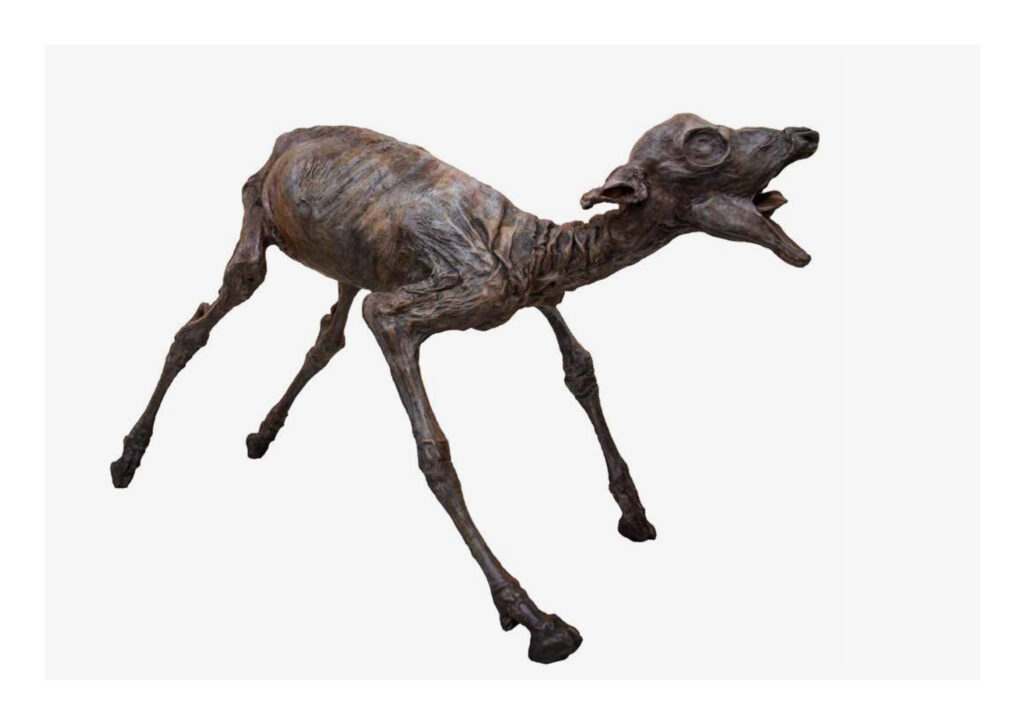
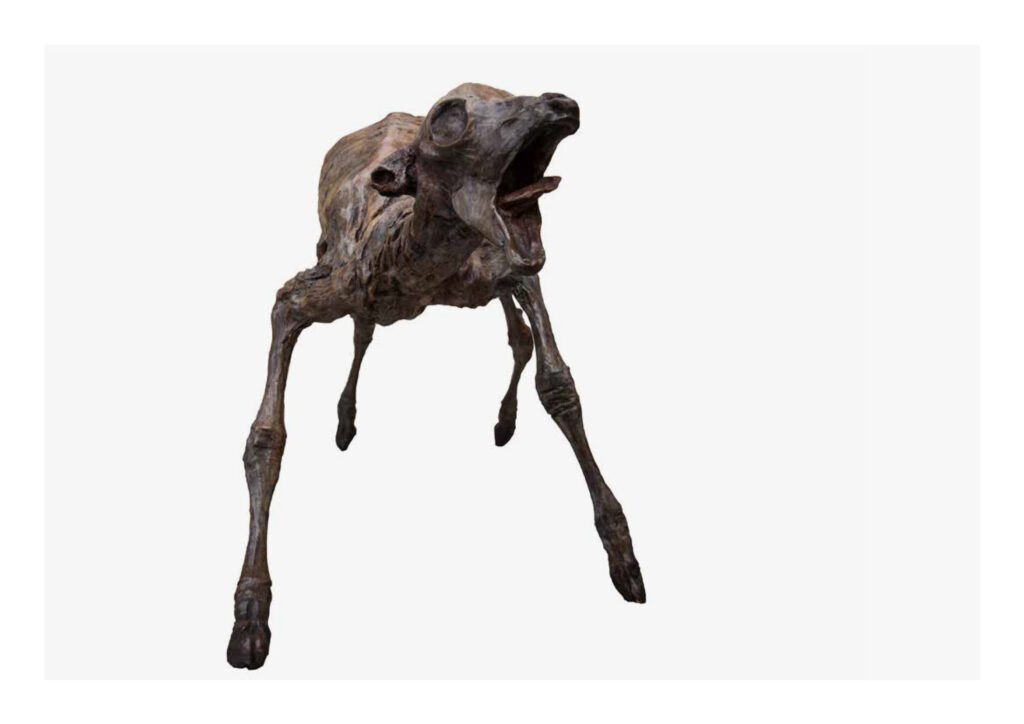
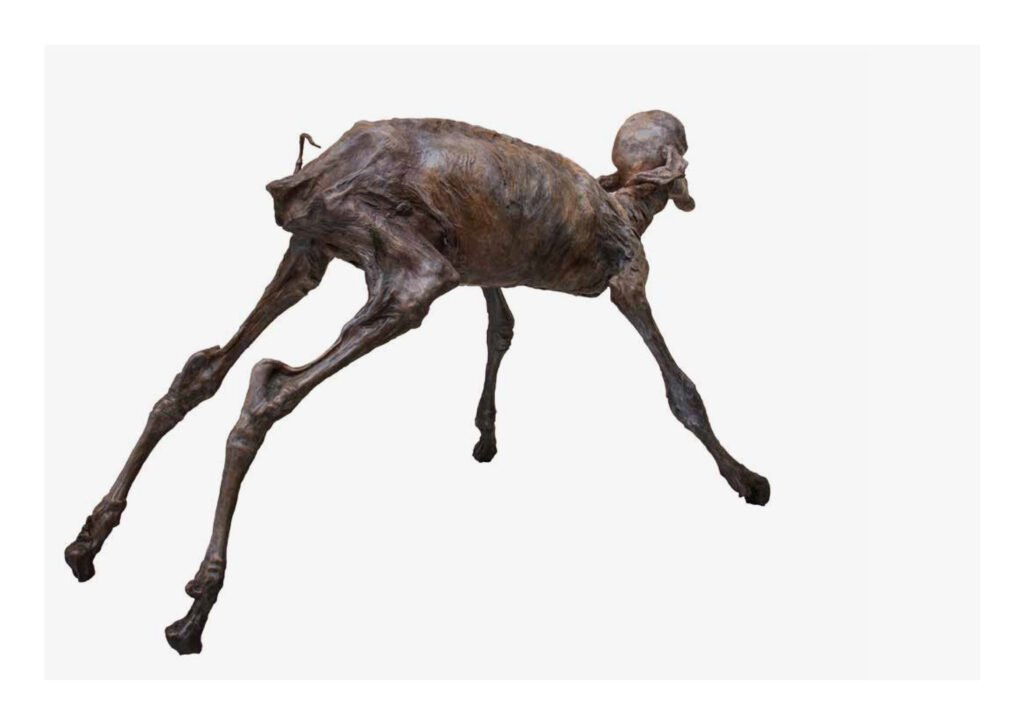
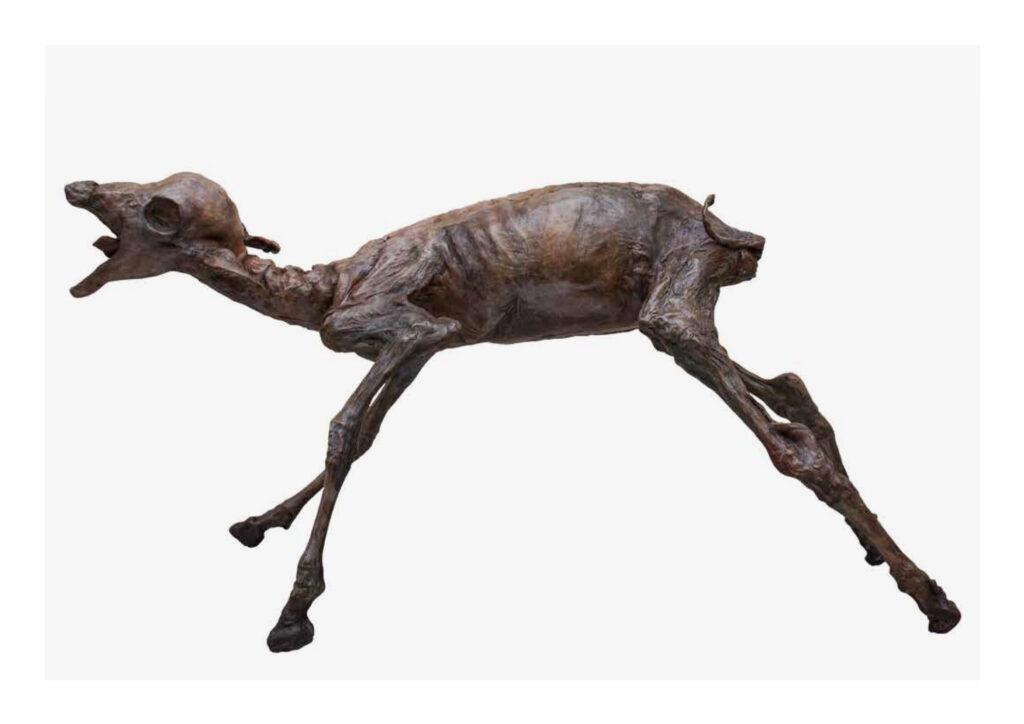
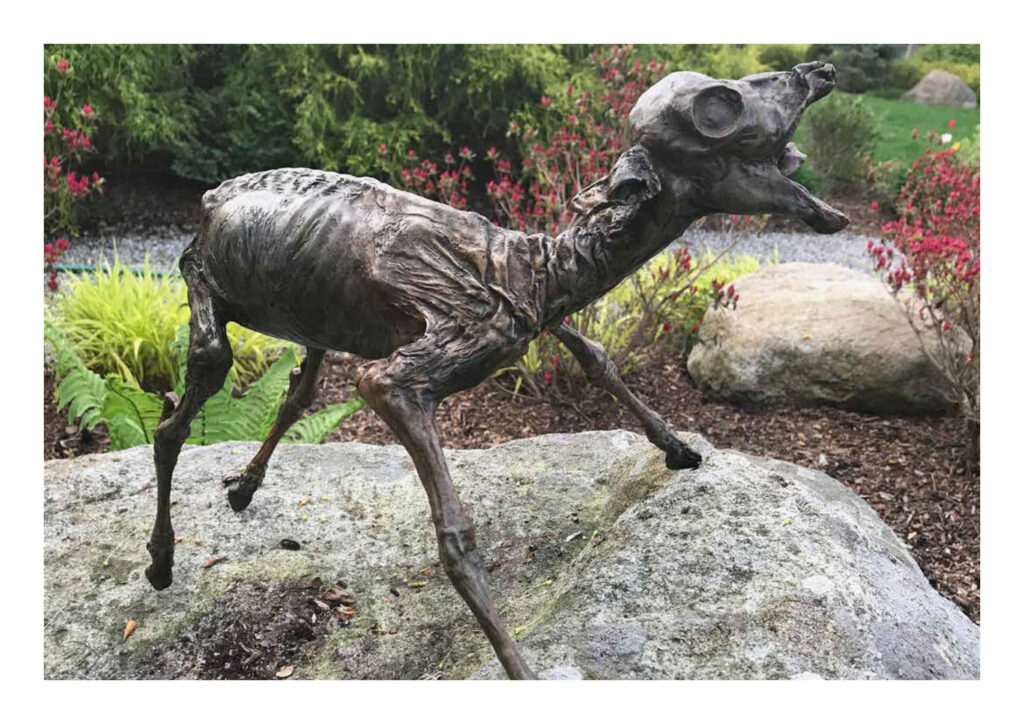
In Auerbach’s “Hear Me,” one confronts a profoundly intense interrogation of existential desire and agony, captured through the embodiment of a quadruped creature ensnared in what appears to be a seemingly eternal scream. It inhabits a liminal space, balanced precariously between life and decay, vitality and oblivion. Its existence, trapped in a temporal void and suspended in a state of torment, exhibits an urgency that resists specific interpretation. This elusiveness thereby opens a labyrinthine inquiry into our communication modalities and raises profound questions about the nature of understanding, serving as a gateway into deeper reflections.
In its universality, the primal scream defies language and cultural specificity barriers. Yet, the core of its meaning remains concealed, shrouded in ambiguity, and bereft of context. Does the scream signal the onset of suffering, or does it resonate as a liberation cry? Is the being entrapped in an unbridgeable abyss of isolation, or is there a straining outreach, a yearning to connect with those who witness it? These questions lead us further into the sculpture’s complex narrative.
The sculpture’s fraying bronze texture, unravelling and yet resilient, layers the narrative with further intricacy. It simultaneously attests to the medium’s enduring quality and its form’s inherent ephemerality, thus setting forth a paradoxical contemplation on the notion of immortality vis-à-vis the frailty of existence. This textural exploration offers an acute reflection, tinged with a melancholic recognition that even the most resilient matter cannot elude the relentless march of time and decomposition.
As an allegorical memento casting its shadow upon the sensory cusp of mortality, “Hear Me” transmutes into a poignant, reflective commentary on the transient ephemerality that characterizes life itself. This culmination brings together the diverse threads of existential questioning, universal communication, and the paradox of permanence, weaving them into a compelling dialogue on what it means to exist, connect, and endure. In this refined synthesis, “Hear Me” stands as a profound intersection of art and philosophy, engaging the observer in a contemplative experience that transcends the ordinary.